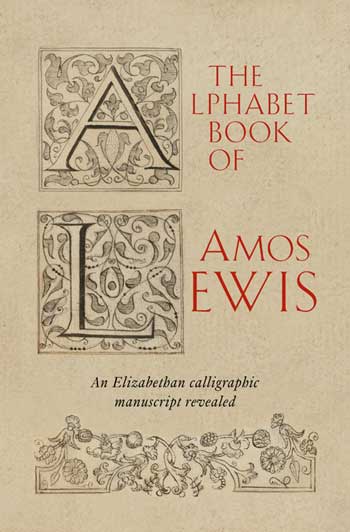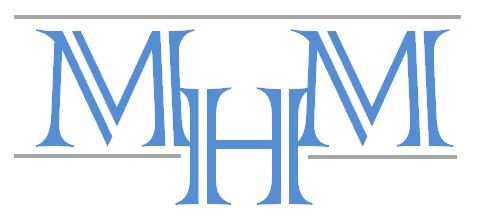The calligraphic manuscript presented here in facsimile was made in about 1585 in a bid for the patronage of an Elizabethan magnate, Sir John Petre of Thorndon
Hall in Essex. Its creator, Amos Lewis, hoped that it would give pleasure to Petre’s son.
A Protestant clergyman, Lewis must have despaired of employment in the Catholic Petre household.
His book is unfinished; the ‘Z’ text ends in pencil draft. But incompletion saved it: had it entered the schoolroom it would have
become thumbed and shabby and been discarded. This precious survival is the earliest known attempt at an original writing book by an Englishman. The first printed
English writing book was A Book Containing divers sortes of hands (London, 1570) by John (Jean) de Beau Chesne, a Frenchman.
The Alphabet Book is a delightful miniature. Lewis combined varied scripts, ornament, Renaissance grotesques, strapwork, flowers and foliage, fine roman capital
letters set against moresques, and polychrome Petre heraldry to emulate printed Continental writing books. It begins and ends with poems, Latin and English, in which
he presses his suit.
The context is European: printed writing manuals first appeared in Venice and Rome in the 1520s. Lewis’s main model was a book by a Swiss master, Urban Wyss,
published in Zurich in 1549. His Latin texts to individual letters, stressing the value of learning, draw on proverbial wisdom gathered in Erasmus’s compilations
of adages first published in 1500 and since expanded by others, notably in Germany. Lewis’s Alphabet Book indeed opens a window into that flowering of
humanistic culture which was central to learning and letters in the age of Shakespeare.
Now that the digital revolution is perceived as a threat to handwriting Lewis’s manuscript Alphabet Book is also a reminder that during an earlier
technological
revolution, that of printing with moveable type, books promoted skill, even virtuosity, in handwriting.
Published with the generous support of the Kythera Foundation, Düsseldorf
top
|
|
Foreword
Introduction
Early Printed Writing Books
English Printed Writing Books of the Sixteenth Century
Amos Lewis
Sir John Petre
The Alphabet Book
HERALDRY
ORNAMENT
CAPITAL LETTERS
WRITING STYLES
TEXTS
Conclusion
AMOS LEWIS’S ALPHABET BOOK IN FACSIMILE
Picture Credits
Bibliography
Indexes |
|
top
|
Simon Swynfen Jervis, FSA, is an art historian. After twenty-three years in the furniture department of the
Victoria and Albert Museum, he became Director and Marlay Curator of the Fitzwilliam Museum, Cambridge, and later Historic Buildings Secretary of the National Trust.
He has served as a
trustee of the Royal Collection, as chairman of the Leche Trust, the Walpole Society and the trustees of Sir John Soane’s Museum, and as
president of the Society of Antiquaries of London. A director of the Burlington Magazine until 2024, he is now president of the Furniture History Society.
Since the 1960s he has written on design and ornament, including: Printed Furniture Designs before 1650 (1974); High Victorian Design (1983);
the Penguin
Dictionary of Design and Designers (1984); British and Irish Inventories (2010); and Roman Splendour, English Arcadia (2015, with
Dudley Dodd). His book
Rare Treatise on Interior Decoration and Architecture: Joseph Friedrich zu Racknitz’s ‘Presentation and History of the Taste of the
Leading Nations’ (2019)
was shortlisted for the Apollo Book of the Year Award.
Two recent articles (Burlington Magazine, 2018 and 2021, the latter with Stephen Lloyd) have identified perspective paintings constituting unique visions
of aristocratic life on the brink of the Civil War as commissioned in 1640 by William Paston of Oxnead Hall, Norfolk.
|
|
Philip Lewis designed
the book, setting the body in Adobe Jenson Pro.
Opero, S.r.l., of Verona, Italy, printed the book on Symbol Tatami White 135 gsm.
|
top
|
Contact the publishers or local agents for further information: Enquiries
|
top
|
Please print off the order form and
send it by mail to John Adamson, 90 Hertford Street, Cambridge CB4 3AQ, England.
|
top

![Letter ‘Sˆ (f. 22) from ‘The Alphabet Book of Amos Lewis‘
SI PVER HOC SCIRET, QUAN=
tum doctrina Valeret, Raro dormiret: sed
nocte dieque studeret.
[If a boy knew the value of learning he would
rarely sleep but study night and day.]](amoslewisS500.jpg)

